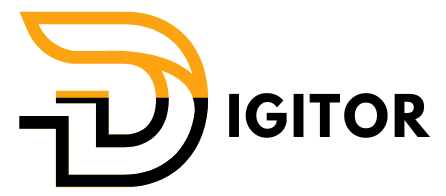Cloudflare Settings for GoDaddy Domain: A Complete Guide
If you’ve connected your GoDaddy domain to Cloudflare, the next critical step is configuring the right settings. Proper Cloudflare settings for GoDaddy domain ensure your website is secure, fast, and reliable for your visitors around the world. Whether you’re running a blog, portfolio, or eCommerce site, these optimizations can make a substantial difference in performance.
In this article, we’ll explore how to fine-tune Cloudflare settings after you’ve pointed your GoDaddy domain to Cloudflare’s nameservers.
Why Use Cloudflare with GoDaddy?
Connecting your GoDaddy domain to Cloudflare offers several benefits:
-
Enhanced website speed through CDN caching
-
Free SSL certificate with automatic HTTPS
-
Advanced DNS management with reduced latency
-
DDoS protection to secure your website
-
Easy traffic and threat analytics
With the right configuration, Cloudflare helps transform your GoDaddy-registered site into a high-performing, secure web asset.
Step-by-Step: Configure Cloudflare Settings for GoDaddy Domain
After you’ve connected your domain to Cloudflare (changed nameservers in GoDaddy), follow these steps to set the ideal configurations.
DNS Settings
Head to the DNS tab in Cloudflare:
-
Ensure all important records (A, CNAME, MX, TXT) are correctly listed.
-
Enable the orange cloud icon next to records you want to proxy through Cloudflare.
-
Avoid proxying mail-related entries like
mail.yourdomain.comto prevent email delivery issues.
✅ Pro Tip: Use MXToolbox to verify DNS configurations.
SSL/TLS Settings
Cloudflare offers a free SSL certificate. In the SSL/TLS tab:
-
Choose Full or Flexible encryption mode.
-
Enable “Always Use HTTPS” to force all traffic over secure connections.
-
Turn on Automatic HTTPS Rewrites to prevent mixed content issues.
These SSL settings ensure your visitors’ data remains encrypted and secure.
Speed Optimization
Cloudflare provides multiple performance settings under the Speed tab:
-
Auto Minify: Compress CSS, JavaScript, and HTML to reduce file sizes.
-
Brotli Compression: Improve compression and load times.
-
Rocket Loader: Asynchronously load JavaScript for better rendering speed.
These settings are especially useful for WordPress and other CMS-powered websites.
Caching Settings
Navigate to the Caching tab:
-
Set Caching Level to “Standard.”
-
Enable Always Online to serve a cached version during downtime.
-
Create Page Rules for dynamic content pages (e.g., exclude
/wp-admin/*from caching).
Page Rules can greatly enhance the performance of specific areas of your website.
Firewall and Security
To keep your site protected:
-
Go to the Firewall tab and set your Security Level to Medium or High.
-
Add custom Firewall Rules to block suspicious traffic.
-
Use Bot Fight Mode to filter harmful bots.
Cloudflare’s security features provide essential protection against cyberattacks and unwanted traffic.
Analytics and Monitoring
Use the Analytics dashboard to monitor:
-
Traffic trends
-
Bandwidth usage
-
Threats blocked
-
Cached vs. uncached requests
For enhanced insights, consider integrating with tools like Google Analytics.
Troubleshooting Common Issues
If something breaks after enabling Cloudflare, here are quick fixes:
-
SSL errors: Try switching between Flexible and Full SSL modes.
-
Emails not working: Ensure mail DNS records are not proxied (gray cloud).
-
Slow loading: Clear browser and Cloudflare cache or reconfigure page rules.
Still stuck? Contact our support team for hands-on help.
Final Thoughts
Proper Cloudflare settings for GoDaddy domain ensure you’re getting the best from both platforms—GoDaddy as a reliable domain registrar and Cloudflare as a powerful CDN and security layer. From faster load times to better protection and SEO performance, this integration is essential for modern websites.
With just a few tweaks, you can enhance every aspect of your site’s performance and user experience.







